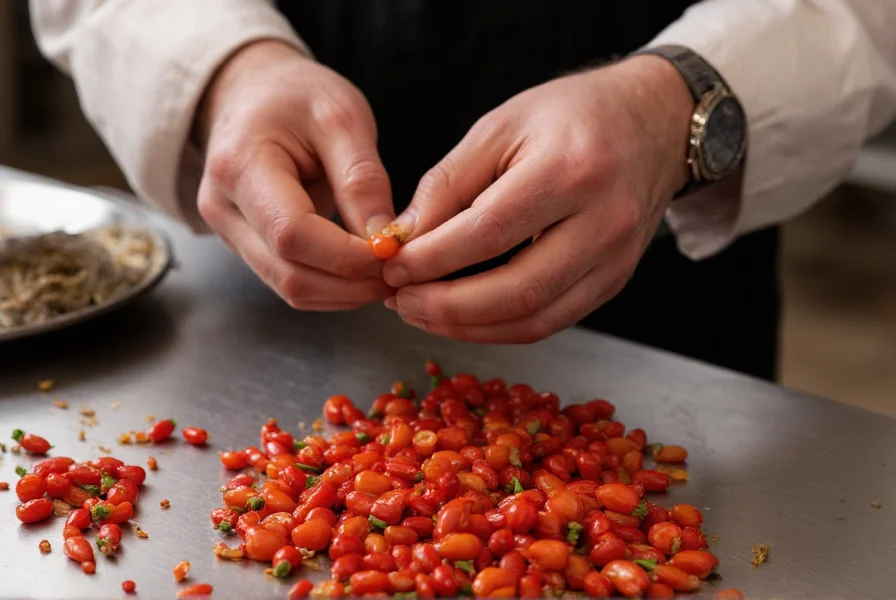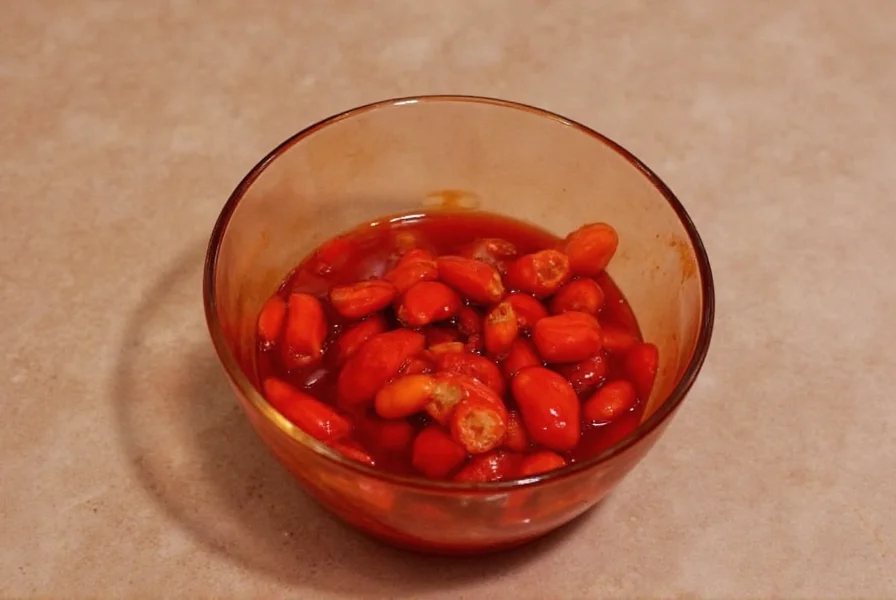When your chili turns out too fiery, understanding how to make a spicy chili less spicy becomes an urgent kitchen priority. Capsaicin, the compound in chili peppers that creates heat, binds to receptors in your mouth, causing that burning sensation. The good news is several scientifically backed methods can effectively reduce this heat without ruining your dish.
Why Chili Gets Too Spicy (And How to Fix It)
Over-spicy chili usually happens when too many hot peppers are added, seeds aren't properly removed, or spice levels aren't tested incrementally during cooking. The key to fixing overly spicy chili lies in understanding how capsaicin interacts with other ingredients. Since capsaicin is fat-soluble and pH-sensitive, certain ingredients can neutralize or dilute its effects.
Proven Methods to Reduce Spiciness in Chili
Not all remedies work equally well. Here are the most effective, science-backed approaches to tone down spicy chili, ranked by effectiveness:
| Method | How It Works | When to Use | Effectiveness |
|---|---|---|---|
| Dairy products | Capsaicin binds to casein in dairy, washing it away | Immediately after discovering excess heat | ★★★★★ |
| Acidic ingredients | Neutralizes pH, reducing heat perception | During cooking or final adjustments | ★★★★☆ |
| Sugar/honey | Counteracts heat receptors on tongue | Final seasoning stage | ★★★☆☆ |
| Starchy ingredients | Absorbs some capsaicin molecules | During cooking process | ★★★☆☆ |
| Dilution | Reduces overall capsaicin concentration | Early in cooking process | ★★★☆☆ |
Dairy: The Most Effective Heat Reducer
Adding dairy is the single most effective solution for what to add to chili to make it less spicy. The casein protein in milk, yogurt, or sour cream binds with capsaicin molecules, effectively washing them away from your taste receptors.
How to use: Stir in 1/4 cup of whole milk, heavy cream, or full-fat coconut milk per serving. For immediate relief while eating, serve with a dollop of sour cream or sprinkle of shredded cheese. Avoid low-fat dairy options as fat content is crucial for binding capsaicin.

Acidic Ingredients: Neutralizing the Burn
Acids help neutralize the alkaline nature of capsaicin, reducing perceived heat. This method works particularly well for natural ways to mellow out spicy chili without adding new flavors.
How to use: Add 1-2 tablespoons of lime juice, lemon juice, or apple cider vinegar per pot of chili. Start with small amounts and taste as you go. Tomatoes (which are acidic) can also help if incorporated into your recipe.
Sugar and Sweet Elements: Counteracting Heat Perception
Sugar doesn't eliminate capsaicin but counteracts how our taste buds perceive heat. This approach works well for quick fixes for too spicy chili when other ingredients aren't available.
How to use: Add 1-2 teaspoons of sugar, honey, or maple syrup per serving. For chili, consider adding sweet vegetables like corn, sweet potatoes, or roasted bell peppers which contribute natural sugars without making your dish taste overtly sweet.
Starchy Ingredients: Absorbing the Heat
Starches can absorb some capsaicin molecules, effectively reducing the overall heat concentration. This is one of the best methods to reduce heat in chili while maintaining the dish's integrity.
How to use: Add cooked beans, potatoes, or rice to your chili. These ingredients absorb some capsaicin while adding heartiness. For immediate results, stir in a tablespoon of cornstarch mixed with cold water, then simmer for 5-10 minutes.
Dilution: The Simplest Approach
When time allows, diluting your chili with additional non-spicy ingredients is an effective strategy for fixing overly spicy chili recipe issues.
How to use: Double your recipe by adding equal parts of non-spicy components: tomatoes, broth, beans, or vegetables. This method works best early in the cooking process before flavors have fully developed.
What NOT to Do When Fixing Spicy Chili
Certain common suggestions actually make the problem worse:
- Don't add more water - This dilutes flavor without effectively reducing heat
- Avoid alcohol - While it dissolves capsaicin, it evaporates quickly, potentially concentrating heat
- Don't just keep cooking - Extended cooking can sometimes intensify heat rather than reduce it
Preventing Overly Spicy Chili in the Future
The best approach to how to make a spicy chili less spicy is prevention. Follow these tips:
- Remove seeds and membranes from peppers (where most capsaicin resides)
- Add spices incrementally, tasting as you go
- Start with milder peppers and build up heat gradually
- Keep dairy or acid ingredients on hand as safety measures

Understanding the Science Behind Heat Reduction
The effectiveness of these methods comes from food science principles. Capsaicin is hydrophobic (water-repelling) but lipophilic (fat-loving), which explains why dairy works better than water. Its chemical structure also responds to pH changes, which is why acids help neutralize the burning sensation. Understanding this science behind reducing spiciness in food helps you choose the right method for your specific situation.
Can I use milk to reduce spiciness in chili?
Yes, milk is one of the most effective solutions. The casein protein in dairy binds with capsaicin molecules, washing them away from your taste receptors. Whole milk or full-fat dairy products work best since capsaicin is fat-soluble. Add 1/4 cup of milk per serving of chili, or serve with sour cream on top for immediate relief.
How much sugar should I add to make chili less spicy?
Start with 1-2 teaspoons of sugar per serving of chili. Sugar counteracts heat perception but doesn't eliminate capsaicin. Add gradually while tasting, as too much can make your chili overly sweet. For better results, consider adding naturally sweet ingredients like corn, sweet potatoes, or roasted bell peppers which balance heat without making your dish taste sugary.
Will adding more tomatoes reduce chili spiciness?
Yes, adding tomatoes can help reduce perceived spiciness because they're acidic. The acid neutralizes some of the capsaicin's effects. Add one 14-ounce can of diced tomatoes per pot of chili, then simmer for 10-15 minutes to allow flavors to blend. Canned tomato sauce works even better than fresh tomatoes due to its higher concentration.
Can I fix spicy chili after it's been cooked and cooled?
Yes, you can fix cooled chili by reheating it gently before applying remedies. Dairy, acid, and sugar methods still work effectively when the chili is reheated. For best results, bring the chili back to a gentle simmer before adding corrective ingredients, then let it cook for 5-10 minutes to allow the flavors to integrate properly.
Why does yogurt work better than water for spicy food?
Yogurt works better than water because capsaicin (the compound that makes food spicy) is fat-soluble but not water-soluble. The fats and casein protein in yogurt bind with capsaicin molecules, effectively removing them from your taste receptors. Water merely spreads the capsaicin around your mouth without neutralizing it, which is why drinking water often makes spicy food feel hotter.











 浙公网安备
33010002000092号
浙公网安备
33010002000092号 浙B2-20120091-4
浙B2-20120091-4